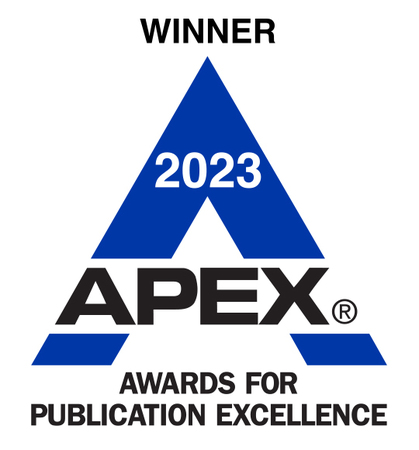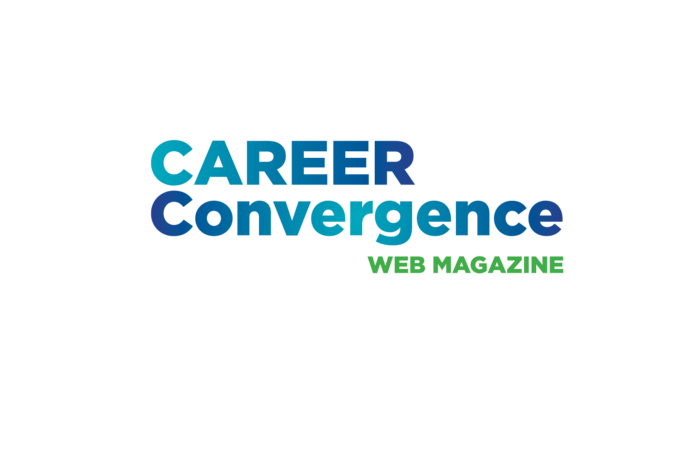10/01/2025
Classroom Actions for K-12 Teachers to Promote a Future-Focused Mindset
By Shira Woolf Cohen
From Classrooms to Careers
Each year, millions of students graduate high school believing they are prepared for what comes next, only to discover that the world beyond school looks nothing like the classrooms they have left behind. For example, 72% of high school graduates say they do not feel fully ready for post-graduation life (YouScience Post-Graduation Readiness Report, 2025). While schools often emphasize academics as preparation for college, the modern workplace demands far more. Employers seek problem solvers, collaborators, and adaptable thinkers, yet more than half report that even recent college graduates fall short in these areas (AAC&U, 2021). Simultaneously, student engagement has declined, with fewer than half of students reporting feeling invested in their learning (Gallup, 2023). The gap between what schools prioritize and what students require has never been wider.
Career development theory emphasizes the significance of this gap. Donald Super’s Life-Span, Life-Space Theory highlights that career development begins early, influenced by the roles young people inhabit long before entering the workforce (Super, 1990). Linda Gottfredson’s theory of circumscription and compromise demonstrates how children and adolescents narrow career options as they form a sense of self and perceive societal constraints (Gottfredson, 1981). If classrooms fail to integrate career concepts into daily instruction, students risk narrowing rather than expanding their vision of what is possible.
It is important that teachers provide instruction to students that incorporates learning beyond their subject area. To become a career teacher, they embrace a future-focused mindset in daily practice. A teacher who engages in career practices intentionally connects classroom learning to the world beyond school, highlights the relevance of skills for multiple career pathways, and cultivates the durable skills and professional habits students need to succeed in any field. Career readiness cannot be a single program or pathway; it is most impactful when embedded in everyday teaching and learning. When educators are able to link academic content to real-world applications, explicitly nurture social-emotional and professional skills, and provide opportunities for students to lead and collaborate, they can close the gap between school and the future. This could increase the chances of higher engagement in school, as well as a generation of young people equipped with the purpose, passion, and skills to thrive in a rapidly changing world.
Classroom Practices That Build a Future-Focused Mindset
The future-focused mindset positions all educators as career teachers who intentionally connect learning to the world beyond school, help students identify their strengths, and foster durable skills applicable across jobs, industries, and life paths (Woolf Cohen, 2025). Specific classroom practices can bring this mindset to life. The following nine actions transform ordinary instruction into future-building experiences - strategies any teacher, in any subject, can start implementing immediately.
1. Students Hold Jobs in the Classroom
Students are assigned responsibilities that mirror real-world roles. Assignments such as Materials Manager, Discussion Leader, or Tech Support do more than support classroom operations; they simulate workplace dynamics, develop leadership and time management skills, and foster accountability. Research indicates that structured student roles increase engagement, responsibility, and self-efficacy (Zimmerman, 2000), supporting both academic and social-emotional growth.
2. Classroom Walls Connect Learning to Careers
Classroom visuals should educate as well as decorate. Posters, bulletin boards, and displays can link academic content to future careers. A math wall may feature architects, data analysts, or engineers, while a literature corner may highlight authors, journalists, or marketing professionals. Early exposure to career information expands adolescents’ vocational awareness and motivation (Super, 1980; Gottfredson, 1981).
3. Social-Emotional Skills Are Named and Nurtured
Employers consistently rank soft skills such as communication, adaptability, and teamwork as more critical than technical skills (NACE, 2022). Social-emotional learning (SEL) skills such as perseverance, empathy, and self-regulation must be explicitly named and nurtured alongside academics. SEL instruction improves academic achievement, behavior, and long-term outcomes (Durlak et al., 2011). Structured opportunities for collaboration, peer feedback, and conflict resolution cultivate these lifelong skills.
4. Durable Skills Are Embedded in Lessons
Students require durable cross-sector skills, including critical thinking, adaptability, creativity, and initiative. These skills should be integrated directly into instruction. A science lab may emphasize troubleshooting and teamwork, while a history project may build persuasive communication and independent research skills. Studies suggest that embedding 21st-century skills into lessons increases both engagement and preparation for future careers (Trilling & Fadel, 2009).
5. Academic Content Is Framed with Real-World Relevance
Instruction should consistently demonstrate real-world relevance. For example, ratios can be contextualized through recipe development, and persuasive essays can connect to marketing campaigns. Linking lessons to real-world applications increases student motivation and engagement (Deci & Ryan, 2000).
6. Careers Are Explicitly Connected to Lessons
Teachers should show students how academic skills apply in careers. Geometry instruction may highlight architecture or 3D design, while debate lessons may explore legal advocacy or public policy. Explicit career connections broaden perspectives, support exploration, and help reduce vocational self-limitation (Gottfredson, 1981).
7. Students’ Strengths Are Recognized and Celebrated
Career readiness begins with self-awareness. Classroom cultures should acknowledge and amplify student strengths. Strength-based feedback and recognition increase engagement, motivation, and resilience (Hodges & Clifton, 2004). Recognizing abilities as assets encourages students to envision careers where these strengths can thrive.
8. Leadership and Professional Habits Are Practiced Daily
Classrooms should provide students opportunities to practice leadership and professionalism. Students can lead lessons, mentor peers, or make group decisions. Teachers model and expect active listening, respectful dialogue, clear communication, and follow-through. Structured leadership opportunities in school are linked to employability and life success (Katzenmeyer & Moller, 2001).
9. Academic Language and Professional Behavior Are Encouraged
Future-focused classrooms foster communication and conduct aligned with professional expectations. Teachers model academic language, precise vocabulary, and respectful dialogue. Establishing norms around punctuality, collaboration, and accountability strengthens learning and prepares students to navigate academic and professional environments with confidence. Research demonstrates that discourse-rich classrooms support both cognitive and career development (Lee, 2017).
These strategies do not require a new curriculum, extra budget, or a complete schedule overhaul. Applied with intention, they turn classrooms into launchpads for student success. The focus is not on adding more to teachers’ plates, it is about viewing existing instruction through a career-ready lens. When educators embrace their role as career teachers, students see themselves as future professionals. They engage more deeply, build confidence, and make intentional choices about their paths beyond school.
This is the heart of a future-focused mindset. By embedding career development, durable skills, and professional habits into daily learning, educators create classrooms that are both academically rigorous and intentionally preparing students for the complex, evolving world ahead.
References
American Association of Colleges and Universities (AAC&U). (2021). Falling short? College learning and career success. https://www.aacu.org/research/falling-short
Deci, E. L., & Ryan, R. M. (2000). The “what” and “why” of goal pursuits: Human needs and the self-determination of behavior. Psychological Inquiry, 11(4), 227–268. https://doi.org/10.1207/S15327965PLI1104_01
Durlak, J. A., Weissberg, R. P., Dymnicki, A. B., Taylor, R. D., & Schellinger, K. B. (2011). The impact of enhancing students’ social and emotional learning: A meta‐analysis of school‐based universal interventions. Child Development, 82(1), 405–432. https://doi.org/10.1111/j.1467-8624.2010.01564.x
Gallup. (2023). Walton family foundation-gallup 2023 report card: Student perspective on U.S. schools. https://www.gallup.com/analytics/507038/walton-family-foundation-report.aspx
Gottfredson, L. S. (1981). Circumscription and compromise: A developmental theory of occupational aspirations. Journal of Counseling Psychology, 28(6), 545–579. https://doi.org/10.1037/0022-0167.28.6.545
Hodges, T. D., & Clifton, D. O. (2004). Strengths-based development in practice. In P. A. Linley & S. Joseph (Eds.), Positive psychology in practice (pp. 256–268). Wiley.
Katzenmeyer, M., & Moller, G. (2001). Awakening the sleeping giant: Helping teachers develop as leaders (2nd ed.). Corwin Press.
Lee, C. D. (2017). Culture, literacy, and learning: Taking bloom in the midst of the whirlwind (2nd ed.). Teachers College Press.
Super, D. E. (1980). A life-span, life-space approach to career development. Journal of Vocational Behavior, 16(3), 282–298. https://doi.org/10.1016/0001-8791(80)90056-1
Super, D. E. (1990). A life-span, life-space approach to career development. In D. Brown, L. Brooks, & Associates (Eds.), Career choice and development (2nd ed., pp. 197–261). Jossey-Bass.
Trilling, B., & Fadel, C. (2009). 21st century skills: Learning for life in our times. Jossey-Bass.
Woolf Cohen, S. (2025). Leading future-focused schools: Engaging and preparing students for career success. Sister Leader Press.
YouScience. (2025). 2025 Post-graduation readiness report: Life beyond high school: How students are rethinking college, career, and success. https://resources.youscience.com/rs/806-BFU-539/https://www.ncdacredentialing.org/aws/NCDA/am/gi/2025_PostGraduationReadiness_Report.pdf
Zimmerman, B. J. (2000). Self-efficacy: An essential motive to learn. Contemporary Educational Psychology, 25(1), 82–91. https://doi.org/10.1006/ceps.1999.1016
Shira Woolf Cohen, M.Ed., is an educator, leader, and author of Leading Future-Focused Schools: Engaging and Preparing Students for Career Success. With nearly three decades of experience in education and workforce development, she has served as a Teacher, Program Director, Dean, Vice Principal, and Principal. She is the co-founder of Innovageous, where she designs innovative and courageous systems, programs, and partnerships that expand opportunities for students. She can be reached at shira@innovageous.com
1 Comment
Marcela Mesa on Friday 10/10/2025 at 06:12 PM
Thank you for this insightful article. I can totally relate to it, for years I have been speaking about this to teachers, finding a lot of resistance among them, because they see it as a further load. But it isn't, it is a matter of change of perspective and commitment to the goal of preparing students for the future of work!



